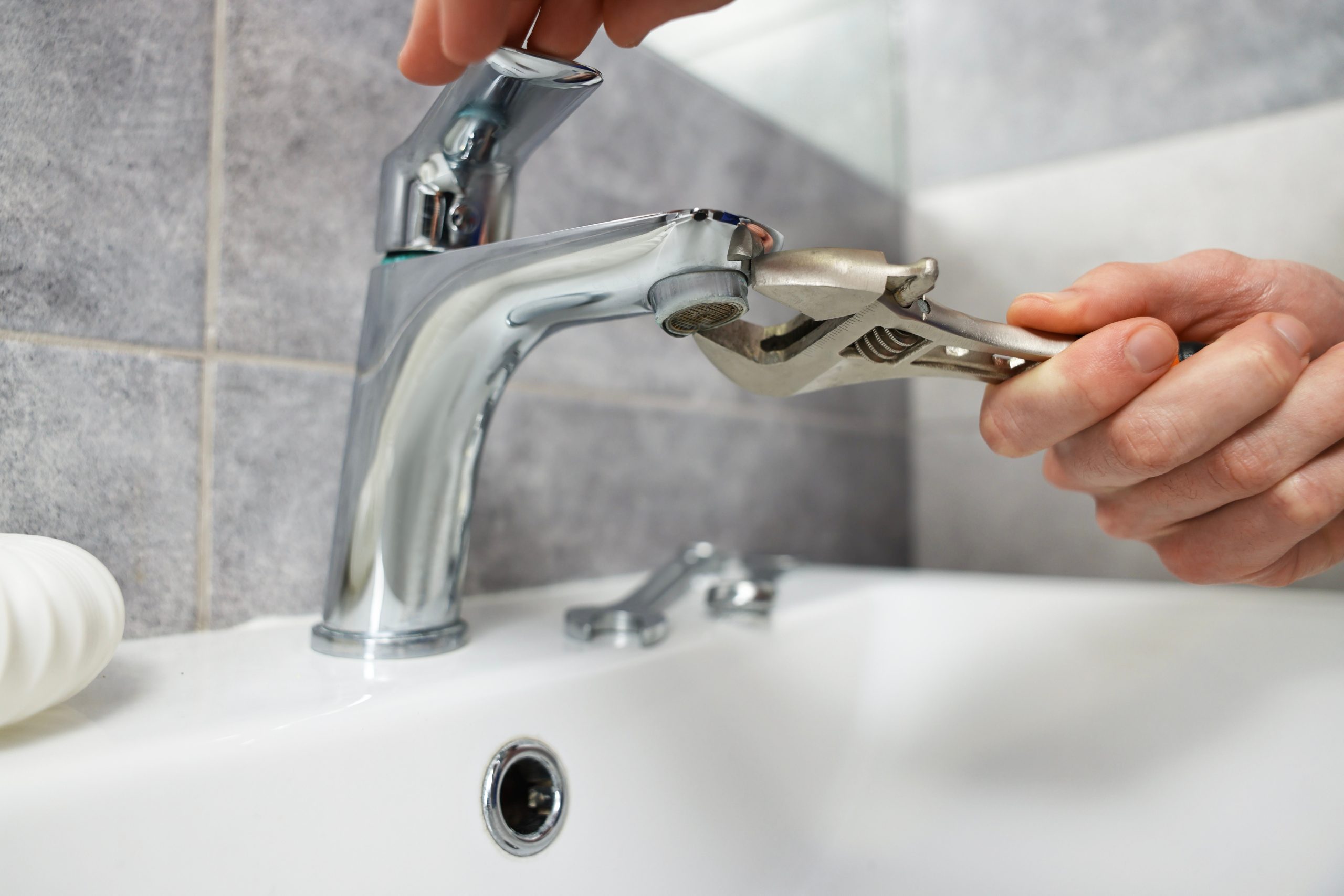
Discovering water damage in your home is a stressful experience, but acting quickly can help minimize the impact. If you find water damage, follow these steps immediately to prevent further harm and avoid costly repairs.
To claim your free damage repair consultation, contact us online, or give us a call at #PHONE1-NUMBER# today!
1. Ensure Your Safety First
Before doing anything, make sure you’re safe. If you find water damage near electrical outlets, appliances, or wiring, cut off the power supply immediately. Water and electricity are a dangerous combination. Use a dry wooden broom handle or something non-conductive to flip the breaker if you can’t reach it safely by hand. If the flooding is severe, evacuate the area to avoid potential injury.
2. Stop the Source of the Water
If possible, trace the water’s origin and stop it. For plumbing issues, turn off the water supply at the main valve. If the damage is from a roof leak, a window, or a crack in the foundation, temporarily seal or block the entry point as best you can. This step is crucial in preventing further water from entering and causing additional damage.
3. Protect Belongings
Next, try to move valuables, electronics, and important documents to a dry location. Water damage can ruin personal items, so the quicker you move them out of harm’s way, the better. If items can’t be moved, place aluminum foil or plastic under the legs of furniture to protect them from absorbing moisture.
4. Document the Damage
Take photographs and videos of the affected areas and belongings. This documentation is vital for insurance claims and can help you remember what needs attention later. Don’t throw away anything until you’ve had a chance to document it fully. Insurance adjusters will need detailed evidence to assess the damage.
5. Begin Water Extraction
Once you’ve ensured safety, the next step is to remove any standing water. If the flood is minor, use towels or mops to absorb the water. For larger floods, you may need a wet/dry vacuum or a pump. Begin with the highest point in the affected area and work your way down to avoid pushing the water deeper into other areas. Be quick—water left to sit can seep into walls, flooring, and furniture, making the damage more extensive.
6. Dry Out the Area
With the majority of the water removed, the next task is drying out the space to prevent mold and further damage. Open all windows and doors if possible to promote ventilation. Set up fans or dehumidifiers to help dry out the air and the surfaces in the room. If the damage is extensive, you may need to rent or purchase a commercial dehumidifier. It’s important to keep air circulating for at least 48 hours, especially in areas that are hard to dry, like carpets or under cabinets.
7. Remove Wet Materials
Materials like soaked carpeting, insulation, drywall, and baseboards need to be removed promptly to prevent mold growth. Mold can begin to develop within 24-48 hours of water exposure, so getting rid of wet materials quickly can minimize this risk. Wear gloves, goggles, and a mask when handling contaminated materials to protect yourself from potential mold spores or bacteria.
8. Assess the Structural Damage
Check for any visible structural damage. Look for warping, buckling, or softness in the walls, floors, and ceiling. If you find any of these signs, you may need to call in a professional to assess whether the damage is compromising the integrity of your home. If you notice mold growing, it’s a clear sign that you’ll need to take further steps.
9. Contact Your Insurance Provider
Once the immediate concerns have been addressed, contact your insurance company as soon as possible. Report the damage and begin the claims process. Be prepared to provide the documentation you’ve gathered (photos, videos, and descriptions). Insurance companies will often send an adjuster to assess the damage in person. Depending on your coverage, you may be reimbursed for repairs or replacements.
10. Call a Professional
Water damage restoration can be a complicated and extensive process. If the damage is widespread or the water source is unclear, it’s best to contact a professional. Water damage restoration experts have the equipment and expertise to mitigate damage, remove moisture, and treat affected areas. They can also test for mold and other health risks.
11. Prevent Future Water Damage
Once the immediate problem has been dealt with, take steps to prevent future water damage. Check your roof for leaks, clean your gutters, and inspect your plumbing regularly. In flood-prone areas, consider investing in sump pumps or water barriers to protect your home from future water intrusion. Keep your home’s foundation clear of debris and seal any cracks you find.
Water damage doesn’t have to lead to overwhelming repair bills if you take prompt, decisive action. The quicker you respond, the less long-term damage you’ll face. The key is to stop the water at its source, safely remove what you can, dry the space thoroughly, and seek professional help when necessary. Time is crucial, so don’t delay—take action as soon as you spot the issue.
To claim your free damage repair consultation, contact us online, or give us a call at #PHONE1-NUMBER# today!

